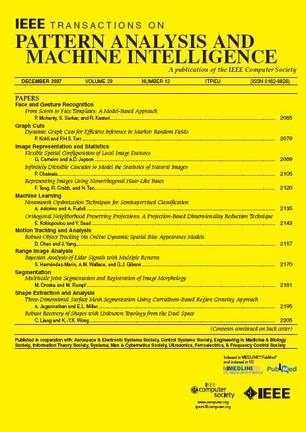分割视频的运动成分:一个长期的无监督模型。
IF 18.6
1区 计算机科学
Q1 COMPUTER SCIENCE, ARTIFICIAL INTELLIGENCE
IEEE Transactions on Pattern Analysis and Machine Intelligence
Pub Date : 2025-09-09
DOI:10.1109/tpami.2025.3608065
引用次数: 0
摘要
人类有能力连续分析视频并立即提取运动成分。我们希望采用这种模式,在视频序列上提供连贯和稳定的运动分割。从这个角度来看,我们提出了一个新的长期时空模型,以完全无监督的方式运行。它以连续光流(of)场的体积作为输入,并在视频上输出相干运动段的体积。更具体地说,我们设计了一个基于变压器的网络,在这个网络中,我们利用一个数学上建立良好的框架,证据下限(ELBO),来推导损失函数。该损失函数结合了一个涉及时空参数运动模型的流重建项,以一种新颖的方式将视频序列的空间维度的多项式(二次)运动模型和时间维度的b样条组合在一起,以及一个在片段上强制时间一致性的正则化项。我们报告了在四个VOS基准上的实验,在一次对序列进行运动分割时展示了有竞争力的定量结果。我们还通过可视化结果强调了我们的方法对时间一致性的关键贡献。本文章由计算机程序翻译,如有差异,请以英文原文为准。
Segmenting the motion components of a video: A long-term unsupervised model.
Human beings have the ability to continuously analyze a video and immediately extract the motion components. We want to adopt this paradigm to provide a coherent and stable motion segmentation over the video sequence. In this perspective, we propose a novel long-term spatio-temporal model operating in a totally unsupervised way. It takes as input the volume of consecutive optical flow (OF) fields, and delivers a volume of segments of coherent motion over the video. More specifically, we have designed a transformer-based network, where we leverage a mathematically well-founded framework, the Evidence Lower Bound (ELBO), to derive the loss function. The loss function combines a flow reconstruction term involving spatio-temporal parametric motion models combining, in a novel way, polynomial (quadratic) motion models for the spatial dimensions and B-splines for the time dimension of the video sequence, and a regularization term enforcing temporal consistency on the segments. We report experiments on four VOS benchmarks, demonstrating competitive quantitative results while performing motion segmentation on a sequence in one go. We also highlight through visual results the key contributions on temporal consistency brought by our method.
求助全文
通过发布文献求助,成功后即可免费获取论文全文。
去求助
来源期刊
CiteScore
28.40
自引率
3.00%
发文量
885
审稿时长
8.5 months
期刊介绍:
The IEEE Transactions on Pattern Analysis and Machine Intelligence publishes articles on all traditional areas of computer vision and image understanding, all traditional areas of pattern analysis and recognition, and selected areas of machine intelligence, with a particular emphasis on machine learning for pattern analysis. Areas such as techniques for visual search, document and handwriting analysis, medical image analysis, video and image sequence analysis, content-based retrieval of image and video, face and gesture recognition and relevant specialized hardware and/or software architectures are also covered.

 求助内容:
求助内容: 应助结果提醒方式:
应助结果提醒方式:


